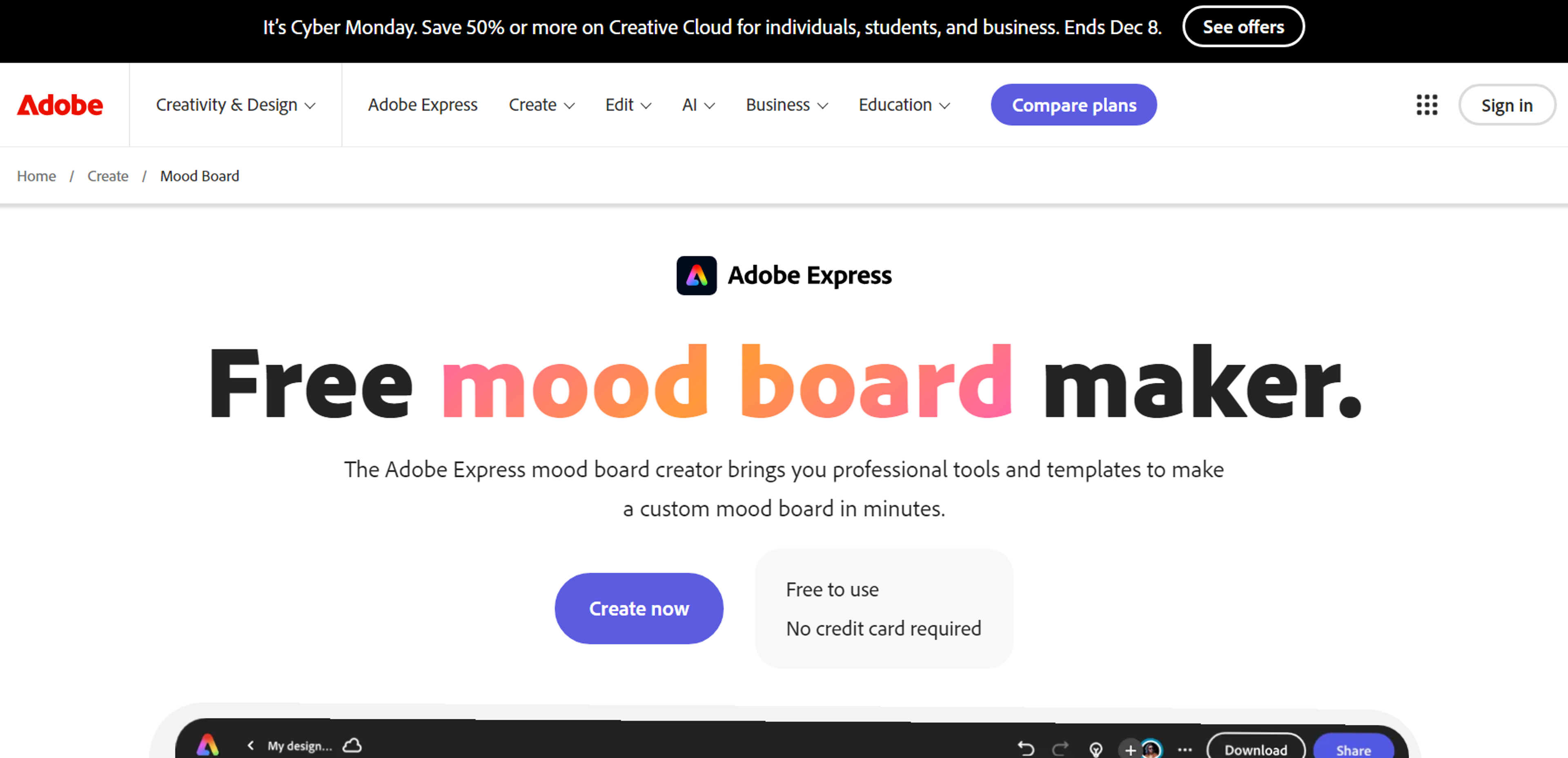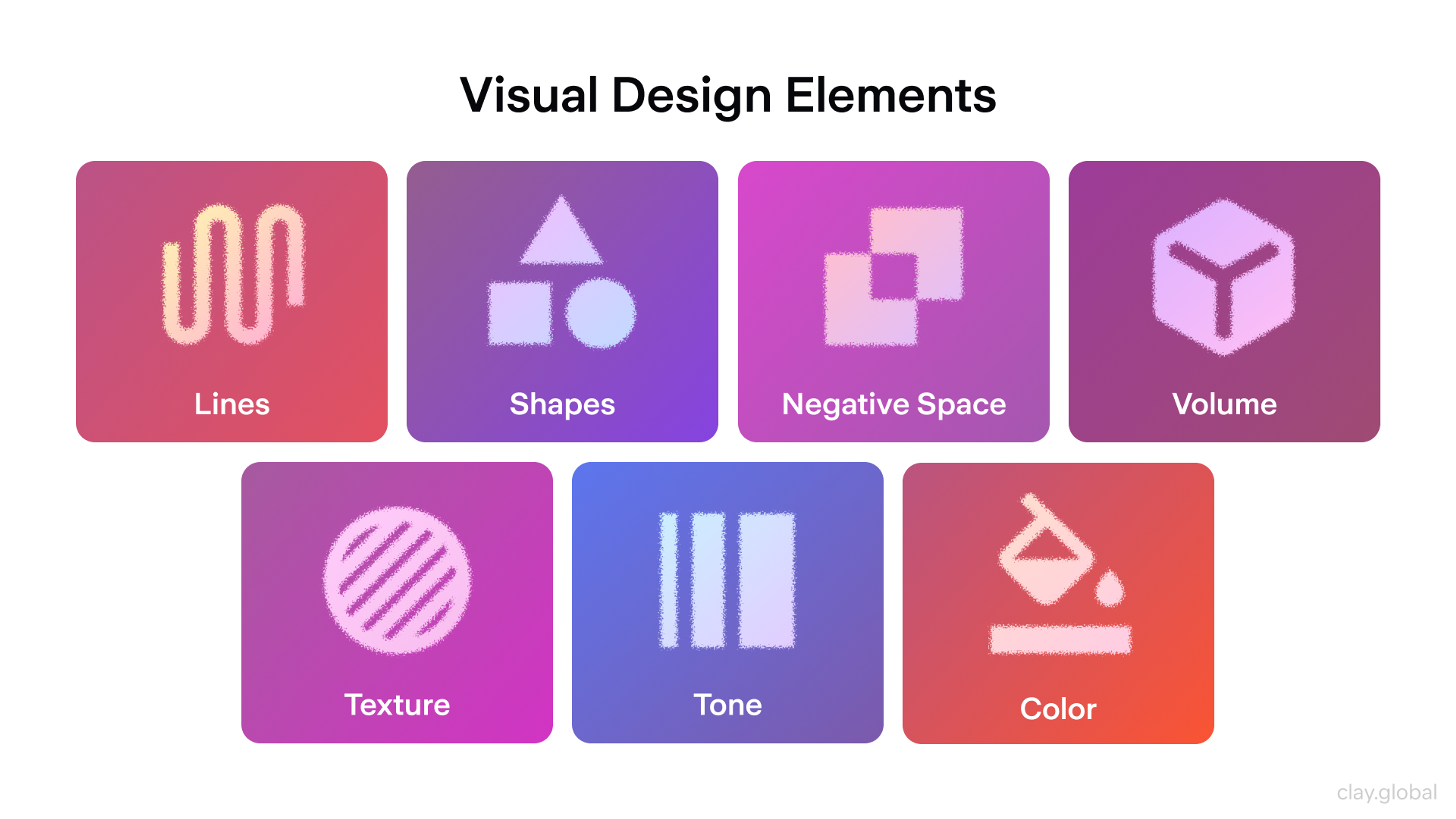Build a standout startup brand with an agency without overspending. Learn practical strategies to create impact, stay consistent, and grow long term.
Branding is more than a logo. It shapes how your startup is perceived and drives long-term growth. With limited funds, professional branding can seem out of reach, yet weak branding can still cost you customers. By working smartly with an agency, you can build a strong, memorable brand on a tight budget.
Mission Control empowers startups to transform their vision into compelling brand experiences, combining creative strategy, design, and venture support for lasting impact.
This article shares concrete tactics to define your brand personality, craft a clear narrative, and create a consistent identity that resonates with the right audience.
Brand Strategy by Clay

Understanding the Importance of Startup Branding
Startup branding is not just about having a catchy logo or a memorable tagline. It’s about creating a strong brand identity that sets your business apart from the competition. Startup branding is important because it establishes your company's identity, influences customer perception, and differentiates your business in a competitive market.
A well-crafted brand strategy is crucial for establishing trust and credibility with your target audience. When potential customers see a consistent and professional brand, they are more likely to trust your startup and engage with your products or services.
Effective branding helps your startup carve out a unique value proposition, making it clear why your business is different and better than others in the market. Building a startup brand is a comprehensive process that includes developing your brand voice, mission statement, visual identity, and adapting these elements as your business grows.
This differentiation is vital in a crowded marketplace where standing out can be challenging. A strong brand identity also fosters an emotional connection with your target audience, making them more likely to become loyal customers.
Moreover, branding is essential for creating a strong brand presence. It ensures that your startup is easily recognizable and memorable, which is crucial for long-term success. Developing a strong and consistent startup's brand is a key component of your marketing strategy, helping align messaging across channels and supporting sustained growth. By investing in a solid brand strategy, you lay the foundation for a strong brand that resonates with your audience and drives business growth.
Developing a Brand Strategy for Startups
Startups should continuously develop a brand strategy before hiring a branding agency or creating visual identities for the brand. A brand strategy encompasses the perception and how a startup aims to build and develop it within the target audience over a prolonged period.
Focusing on a brand strategy for your startup will prevent brand blunders and guarantee that your efforts are streamlined and reliable. Your mission, values, voice, and position are blended to form a brand narrative that defines every branding process.
Creating a strong brand strategy for a startup should have the following elements:
- Target Audience Analysis: Identify your ideal customer segments. Understand their behaviors, needs, pain points, and what drives their purchasing decisions. A startup that achieves a strong level of empathy and serves a well-defined niche is more likely to succeed and differentiate itself from broader competitors.
- Brand Positioning Statement: Each startup should have an elevator pitch ready. Who are you serving? What problem are you solving? Why is your approach to the solution different? This is the purpose of your unique selling proposition (USP). It should be the center of attention within the statement, and you should be able to defend why your brand is the go-to. A positioning statement helps you clarify the area you will be competing in, supports your market positioning, and impacts the reliability and recognition of the customers.
- Brand Personality and Voice: Unlocking your brand's human side is also essential. Will you make your brand playful, an authoritative figure, compassionate, or bold in its approach? This will determine the accompanying visual language and the writing style on the different channels.
- Brand Promise: This is the assured value your startup will bring to customers, and it is a commitment to that value. It is a self-guided principle and a public statement of purpose.
- Competitive Analysis: Identify how your competitors currently position themselves. Look for a branding gap or imbalance within their offerings that your startup can exploit.
Usually, new businesses don't spend much time on strategic planning, meaning they dive right into visual branding when they are ready. Not only does a brand strategy make sure that when you do end up engaging a branding agency, there is alignment on vision, messaging, and market fit, but it also makes execution covering a wider area more cost-efficient because they won't have to start from scratch.
Identifying your brand's strategic elements and laying them out early on allows you to place a filter on any future attempts at branding, focusing on strategy to make sure relevance, consistency, and emotional touch points are all there. This means your branding is not just a pretty image, but purposeful and impactful. In the end, this makes your brand identity impactful, engaging, and highly differentiated out there.
Defining Your Core Values and Mission Statement
Every brand has core values and a mission statement. Together, they are vital to the brand identity and serve as a guide to all decision-making. Fostering the brand mission is vital because it allows the brand to make decisions more easily and build a stronger connection with the target audience.
Startups need to consider the following to create a mission statement and core values:
- Brand Purpose: What is the reason that your brand exists?
- Values to be Maintained: What values can a brand not afford to lose?
- Brand's Aspirations: What goals would your brand like to achieve in the long term?
- Competitive Advantage: What do your competitors within the industry not offer?
- Brand's Mission: What is the role of your mission in shaping your brand in relation to the key values you wish to communicate?
A mission statement must be developed to be more succinct, focused, and powerful. It must serve as the primary anchor in the decision-making process. The brand values must be articulated clearly to assist mission orientation and brand positioning.
Branding Tips for Startups Before Approaching an Agency
Lay a solid foundation before getting into details and working with a branding agency. These are some of the steps to consider:
- Identify the values, vision, objectives, and intended audience: What do you stand for? What do your startup endeavors to achieve? What is your target market? Use customer data to better understand and segment your target audience, which will help tailor your branding strategy for maximum impact. This will give the branding agency a sense of direction on the branding strategy to adopt that would be effective in your target market.
- Conduct research and create a mood board: Find brands you wish to emulate within your industry. Focus on their branding, visuals, and copy, as this will give you insight into how to position your brand during its development phase. Here you can find a good creator:
Source: adobe

- Identify clear objectives and success metrics: Clearly define what you want to accomplish as a brand, such as attaching itself to potential clients or getting more exposure. Establish key performance indicators (KPIs) such as brand awareness, engagement, customer loyalty, and conversion rates to assess the effectiveness of the branding work done.
- Determine rough estimates of costs: It is important to set realistic parameters for the collar, which your expectations and capabilities will inform. This will also enable you to convey your expectations to the brand agency regarding what is possible within your budget.
When you have carried out these preliminary tasks, you can seek the services of a branding agency, and they will be in a better position to help you design a branding strategy unique to your startup.
Understanding Brand Voice and Tone
Brand voice and tone are the foundation for any startup's strategy. Brand voice is the distinct persona and manner of speaking of the brand, and tone is the emotional variation of the brand's message in various situations. Together, they focus on how the audience responds to the brand, and as such, building a solid brand image should be very important to the startup.
A brand voice is a startup anchor, enabling the brand to tell a story. The story ranges from web pages to conversations on posts across all social media platforms. The voice can be friendly and conversational, authoritative and professional, or quirky and bold. The important thing is for the brand to sustain the voice across all the channels as a market differentiator, and they push the edge of the envelope as a startup with the most innovative, solid advances in the market.
The recognition and loyalty of the brand from the audience and customers are built on the startup's voice, and it becomes a very important factor as they become used to the brand's expectations and trust it more and more.
In written communication, the regard in which something is held might be more serious than the rest of the pieces. This is when half of the companies address their investors as if they are working on global diplomacy. "Serious Talk" on social media platforms is in a completely different realm, which makes this the perfect opportunity to use the other half of the company's communication skills.
In some cases, when a brand adds pictures or other visual aids to the brand message, it is much more likely to get more engagement. Any branding strategy needs to be well thought out. In some cases, it will be worth every penny.
Crafting a Compelling Brand Message
In the heart of the startup branding process lies a strong brand message, which acts as the foundation of the entity. This is where every piece of the brand's existence comes from and is built upon. All the values, mission, and reason for existence are embedded in this strong statement. For this reason, companies must pay a lot of attention to their brand message. It must be constructed precisely, as a vague or distorted message will do more harm than good.
To create a brand message that resonates with your audience, start by understanding their needs, wants, and challenges. Then, make a message that communicates the unique value that your brand purports and is reflective of your mission and core principles. Your brand message goes beyond your business's slogan. It narrates a captivating brand story that is trustworthy and different from your competitors.
All brand messages should be consistent across channels like websites, social media, advertising, and customer communications. This integrated system of communication improves business recognition and customer understanding of brand value.
A thoughtful brand message attracts attention and amplifies customers' brand loyalty through its promise and character at different levels of contact. While your startup is growing, you need to evaluate and polish the brand message to ensure that it is NOT out of touch with the brand identity and business objectives.
Choosing the Right Agency
Choosing the right branding agency for your new business is essential since it can impact the success of the brand development process. It's important to select an agency that can create cohesive branding materials and brand elements, ensuring your brand is visually and verbally consistent across all platforms.
You may want to consider the following factors when making this vital decision:
Additionally, understanding the branding process and its stages can help you make an informed choice, as the agency will play a key role in shaping your company's identity through the consistent application of branding elements.
Weighing Up Boutique Agencies vs. Larger Firms
While boutique agencies offer a touch and personal service, often helping to establish a consistent brand voice, larger firms focus on a broad range of services and extensive resources. As mentioned above, outline your startup’s specific needs and goals and determine the agency type that would be best for that vision.
Consider the Agency's History in Startup Branding
This strategy could be advantageous as they have experience building a startup's brand, which differs significantly from established businesses. They are aware of the pitfalls of enterprises and structure their strategies accordingly.
Examine Their Portfolio for Brand Identity Examples
Dig into the agency's past work to uncover its strengths and weaknesses. Ask for the cases worked on to bring value to the client's brand and how these cases illustrate the creation of unified identity designs that embody the client's values and connect with the target audience.
Assessing their portfolio means more than looking at the logos and brand colors. You must also look at the typography to ensure these elements work hand-in-hand and are harmonized throughout the branding collateral.
A powerful and consistent branding visual not only improves brand recall but also cultivates the emotional feeling the audience has towards the brand. The audience should not only see the visual parts of the brand but also understand the principles and objectives the brand stands for.
Visual Design Elements by Clay

Expand Your Search to Agencies Based in Smaller Cities and Emerging Markets
Concentration on firms based in bigger towns may be inevitable due to the perception that these agencies are more popular and have a wider clientele. However, smaller towns or so-called 'emerging markets' should not be neglected. These might be more affordable, have a unique perspective, and be ready to work.
It is easier said than that the business world is full of agencies; it is equally noted that agencies have the appropriate understanding of the target vision of textbook branding and marketing tactics. Rather than a mouse, it needs. Understanding the vision is a system that executes the branding and marketing towards the target customers, maximizing the target vision.
Maximizing Your Budget
When dealing with a shoestring budget, the key is to have a clear marketing strategy and be reasonable with every dollar. To keep in mind when trying to stay within budget and still fulfill your branding and marketing objectives, here are a few tips:
It's essential to align your branding strategies with current market demands to ensure your efforts remain relevant and effective in meeting customer expectations.
Focus On Key Deliverables for Your Target Audience First
Accentuate the important deliverables that must be developed to launch the brand or campaign properly. Constructing a firm structure and a strong base before taking active marketing measures is advisable.
A Phased Costing Approach Could Be Implemented
All activities associated with branding and marketing need not be done at once. Adopting a phased approach enables you to spread your budget over a reasonable period and, therefore, the cost while also allowing for changes of tactics depending on the initial results obtained and feedback.
Inquire About Payment Plans Or Payments Linked With Milestones
Look for flexible payment plans when working with your agency or service provider. Such questions are pertinent, especially in situations where one has to deal with cash restrictions and budgetary constraints. Ask about plans associated with the payments or possibilities for progression payments.
Source: Image by redgreystock on Freepik

The most crucial aspect of endorsement or investment is making intelligent decisions that align with the brand's overarching objectives. Strategies that incorporate many activities will optimize the budget and get the startup the best possible returns.
Which Elements Should be Prioritized in Branding for Startups?
The issue of branding is controversial, and in this context, when you begin to compromise and start to set budgets, you must first look at which direction the future brand’s identity will develop and what will become the core pillars of the budget.
Establishing a strong startup's identity through professional branding services at various stages is crucial to ensure consistency and support long-term growth. Areas of consistent branding that should be outlined first are these:
- Brand Strategy and Brand Positioning: State what you excel at as a brand, whom you will provide the offering to, and what the brand will be in general. Such a strategic positioning will become the basis of all branding activities.
- Visual Identity: Establish a visually striking logo, standard color schemes, and fonts to make the brand consistently memorable. Defining and maintaining a cohesive brand's identity is essential for building recognition, trust, and meaningful connections with your audience.
- Basic Brand Guidelines: Develop guidelines about the brand and its application that maintain the same rules throughout visual representations, voice, and text content.
- Key Marketing Templates: Key marketing templates, such as business cards, flyers, and social media templates, should be designed and developed that are consistent with the overall marketing message and can be adapted to a particular promotion.
- Website Design Fundamentals: Website owners need to work on their design and user experience, as they are part of their branding and convey the brand’s marketing message.
These key branding elements will help you generate a strong and consistent core brand that appeals to the relevant audience and, most importantly, ensures that your startup has the right conditions to succeed.
Smart Ways to Reduce Costs
Thoughtful planning will ensure that your startup employs its resources to the maximum and optimizes the budget without unnecessary costs. Here’s how to reduce costs without a shortcut in quality of work:
Elevate the Importance of Digital Assets: As far as possible, place digital assets over printed materials. Creating and distributing digital assets is often cheaper, eliminating printing and delivery charges. Furthermore, digital media can be easily modified and must not be wholly re-printed.
Have an Internal Team’s Wish List About the Agency’s Responsibilities: When reaching out to external agencies or service providers, prepare your expectations regarding the required scope of work in advance. The presence of such an internal wish list makes the selection more effective and reduces the number of changes to the already concluded contracts.
Fostering a positive workplace culture attracts passionate employees, supports innovation, and helps your startup stand out in a competitive talent market. Encouraging employees to become brand ambassadors further promotes your company's values and strengthens brand loyalty both internally and externally.
Bring Some Work Outside: Restricting the use of outside services is imperative in various geographical areas. For example, content writing, social media management, or even essential design work can be done in-house, eliminating extra costs.
Cut the Number of Revisions: Communicate precisely the tasks and the terms of cooperation with graphic designers, table of contents authors, and other contractors to mitigate the number of revisions. This will not only save time but also reduce the additional costs associated with too many revisions and the approved rates.
Exploit Partial Trade or Equity Structures: Look for joint partnerships where equities can be exchanged with either partners or customers. This approach can be beneficial because the parties involved do not incur heavy costs in the early stages but will continue to reap benefits from the collaboration over time.
In addition, by observing these practices, the financial aspects of your startup can be efficiently managed without compromising on the quality and the efficiency of operations.
Integrating marketing materials with a well-defined brand strategy ensures that all visual elements communicate the brand’s purpose, values, and mission, maintaining consistency across all platforms to build trust and strengthen customer relations.
FAQ
What Branding Strategy Does My Startup Actually Need at an Early Stage?
At an early stage, you don’t need everything at once. Focus on a clear positioning statement, a simple but consistent visual identity, and a basic messaging framework.
Your strategy should answer three questions: who you’re for, what problem you solve, and why your solution is different. Everything else can be layered on as you learn from the market.
How Should Startups Prioritize Branding When the Budget Is Limited?
Start with strategy, not aesthetics. Invest first in positioning, messaging, and a minimal but coherent visual system (logo, colors, typography, a few key templates). Delay expensive brand films, complex websites, and big campaigns until you have proof that your core story and audience fit are working.
When Should I Invest in a Full Brand Strategy vs. “Just a Logo”?
If you’re still validating your idea, a lightweight visual identity might be enough. Once you see traction (repeat users, early revenue, investor interest), it’s time to invest in a full brand strategy. That includes audience research, positioning, messaging, and clear guidelines so all future branding work builds on the same foundation.
How Involved Should Founders Be in Brand Strategy?
Founders should be deeply involved in strategy and key creative decisions, especially early on. Their vision, values, and understanding of the problem shape the brand’s direction and authenticity. An agency can facilitate and challenge, but it can’t replace the founder’s clarity about where the company is headed.
How Do I Work Strategically with an Agency Instead of Just Ordering Deliverables?
Treat the agency as a partner, not a production shop. Share your goals, constraints, product roadmap, and key hypotheses about your audience and positioning.
Ask for a phased plan: strategy first, then identity, then rollout. Agree on what success looks like (e.g., clearer pitch, higher conversion, better investor response) before any design starts.
How Can Startups Test Brand Concepts Before a Full Rollout?
Test early and small. Use landing pages, social posts, email campaigns, or simple ad creatives to compare different messages and visual directions. Combine qualitative feedback (interviews, calls, user testing) with quantitative signals (click-through rates, sign-ups, time on page) to see which concepts actually move behavior.
How Do I Align Brand Strategy with Product and Go-to-Market Strategy?
Your brand strategy should reinforce how you win in the market. Start with your product’s core value and target segment, then ensure your positioning, messaging, and visuals clearly support that focus.
Review your brand decisions alongside pricing, distribution, and acquisition channels so you’re not telling one story while selling in a different way.
Read more:
Conclusion
In conclusion, building a successful long-term partnership with your marketing agency requires effective communication, shared goals, and a commitment to growth. By emphasizing the long-term value of the partnership and viewing branding as an investment, you can lay the foundation for a mutually beneficial relationship.
Implementing key money-saving strategies, such as optimizing your budget, exploring cost-effective channels, and leveraging data-driven insights, ensures that you make the most of your marketing investments.
Additionally, fostering transparency, maintaining open lines of communication, and documenting agreements and expectations help establish a solid framework for collaboration.


About Clay
Clay is a UI/UX design & branding agency in San Francisco. We team up with startups and leading brands to create transformative digital experience. Clients: Facebook, Slack, Google, Amazon, Credit Karma, Zenefits, etc.
Learn more

About Clay
Clay is a UI/UX design & branding agency in San Francisco. We team up with startups and leading brands to create transformative digital experience. Clients: Facebook, Slack, Google, Amazon, Credit Karma, Zenefits, etc.
Learn more


